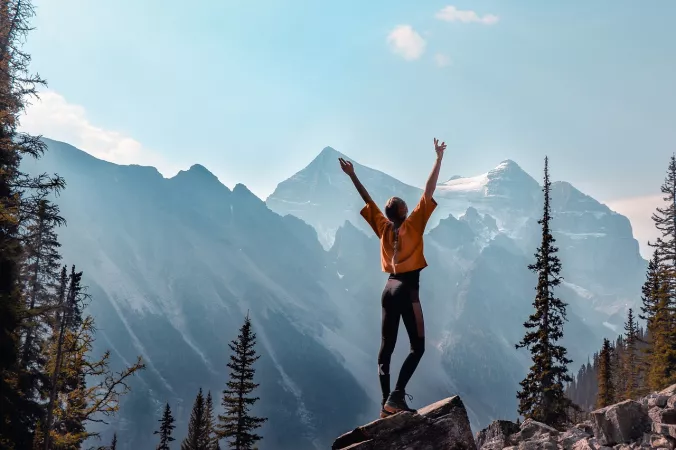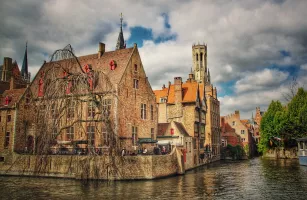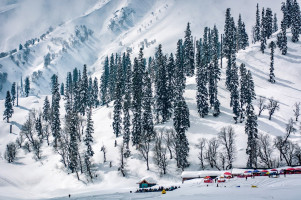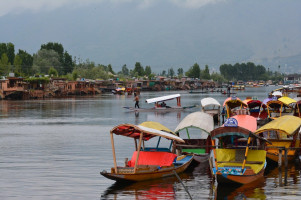
Chandrakhani Pass And The Parvati Valley
Duration
4 to 7 Days
4 to 7 Days
Best time to visit
May-Jun, Sep-Oct
May-Jun, Sep-Oct
Theme
Hill Station, Adventure
Hill Station, Adventure
Chandrakhani Pass And The Parvati Valley Travel Guide
Chandrakhani Pass And The Parvati Valley is a stunning destination nestled in the Himalayan mountains of India. Known for its breathtaking landscapes, rich cultural heritage, and spiritual significance, this region attracts travelers from around the world. The area is famous for its picturesque valleys, ancient temples, and adventurous trekking routes.Top Attractions in Chandrakhani Pass And The Parvati Valley
- Chandrakhani Pass Trek
- Malana Village
- Kheerganga Hot Springs
- Manikaran Sahib Gurudwara
- Tosh Village
Chandrakhani Pass And The Parvati Valley is Famous for
Its pristine natural beauty and spiritual significance, making it a haven for nature lovers and adventure enthusiasts.Top Attractions in Chandrakhani Pass And The Parvati Valley
- Exploring the mystical village of Malana
- Soaking in the healing waters of Kheerganga Hot Springs
- Trekking to the panoramic Chandrakhani Pass
- Visiting the ancient Manikaran Sahib Gurudwara
- Experiencing the laid-back vibe of Tosh Village
What's Great about Travelling to Chandrakhani Pass And The Parvati Valley?
- Perfect for nature lovers and adventure seekers
- Rich cultural experiences
- Breathtaking views of the Himalayas
What's Not So Great about Travelling to Chandrakhani Pass And The Parvati Valley?
- Limited accessibility in some remote areas
- High altitude may not be suitable for all travelers
- Basic amenities in certain villages
Travel Tips for Chandrakhani Pass And The Parvati Valley
- Check weather conditions before trekking
- Respect local customs and traditions
- Carry essentials like water, snacks, and first aid kit
Important Chandrakhani Pass And The Parvati Valley trip information
- Ideal Duration: A week to fully explore the region
- Best Time to Visit: May to October for pleasant weather
- Nearby Airports and Railway Stations: Bhuntar Airport and Joginder Nagar Railway Station
Per Person
13,000
*EXCLUDING APPLICABLE TAXES 5.0 Ratings
( 4 Reviews )
( 4 Reviews )
Total
4,63,000
*EXCLUDING APPLICABLE TAXES 5.0 Ratings
( 20 Reviews )
( 20 Reviews )
Per Person
56,000
*EXCLUDING APPLICABLE TAXES 5.0 Ratings
( 4 Reviews )
( 4 Reviews )
Total
19,999
*EXCLUDING APPLICABLE TAXES 3.7 Ratings
( 5 Reviews )
( 5 Reviews )
Per Person
23,700
*EXCLUDING APPLICABLE TAXES 3.7 Ratings
( 5 Reviews )
( 5 Reviews )
Per Person
16,500
*EXCLUDING APPLICABLE TAXES 5.0 Ratings
( 4 Reviews )
( 4 Reviews )
FAQ's on Chandrakhani Pass And The Parvati Valley
Q1: What is the best time to visit Chandrakhani Pass And The Parvati Valley?
The best time to visit Chandrakhani Pass And The Parvati Valley is during the summer months of May to June and the post-monsoon season from September to October. These months offer pleasant weather for trekking and exploring the stunning landscapes. Avoid visiting during the winter months as the region experiences heavy snowfall, making it challenging for travelers.
Q2: Do I need a visa to travel to Chandrakhani Pass And The Parvati Valley?
Most visitors to Chandrakhani Pass And The Parvati Valley will need a tourist visa to enter the country. Check with the local embassy or consulate for specific visa requirements based on your nationality. Some nationalities may be eligible for visa on arrival or e-visa options for convenience.
Q3: What are the must-visit attractions in Chandrakhani Pass And The Parvati Valley?
The must-visit attractions in Chandrakhani Pass And The Parvati Valley include the Chandrakhani Pass for trekking enthusiasts, the picturesque Parvati Valley known for its natural beauty, the hot springs of Manikaran, and the charming village of Kasol popular among backpackers. Don't miss the unique experience of exploring the local culture in Malana village.
Q4: Is Chandrakhani Pass And The Parvati Valley a safe place to travel?
Chandrakhani Pass And The Parvati Valley is generally safe for travelers. However, it is advisable to take necessary precautions like avoiding isolated areas at night and safeguarding your belongings. Stay informed about local regulations and weather conditions, especially if you plan on trekking in the region.
Q5: What is the local currency in Chandrakhani Pass And The Parvati Valley and can I use credit cards?
The local currency in Chandrakhani Pass And The Parvati Valley is the Indian Rupee (INR). While credit cards are accepted in major establishments, it's recommended to carry cash for smaller purchases and in remote areas. ATMs are available in towns like Manali for easy access to cash.
Q6: What is the local cuisine like in Chandrakhani Pass And The Parvati Valley?
The local cuisine in Chandrakhani Pass And The Parvati Valley offers a mix of Indian, Tibetan, and Israeli influences. Try traditional dishes like Thenthuk (Tibetan noodle soup), Momos (dumplings), and Israeli Shakshuka. Vegetarian options are widely available, and food stalls offer a variety of street snacks. Be mindful of spice levels in dishes if you have a sensitive palate.
Q7: What transportation options are available in Chandrakhani Pass And The Parvati Valley?
Transportation options in Chandrakhani Pass And The Parvati Valley include local buses, taxis, and private car rentals. Public buses connect major towns like Manali and Kasol, while taxis offer a more convenient but pricier mode of transport. Renting a car or motorcycle is ideal for exploring remote areas and enjoying scenic drives in the valley.
Q8: Are there any cultural norms or etiquette I should be aware of when visiting Chandrakhani Pass And The Parvati Valley?
When visiting Chandrakhani Pass And The Parvati Valley, it's essential to respect the local customs and traditions. Dress modestly, especially when visiting religious sites, and ask for permission before taking photographs of locals. Avoid public displays of affection and be mindful of environmental conservation practices. Learning a few basic greetings in the local language can also enhance your cultural experience.
Q9: I am a travel agent. How can I buy travel leads of Chandrakhani Pass And The Parvati Valley?
Register yourself as a travel agent at agents.tripclap.com and then you can buy travel leads to Chandrakhani Pass And The Parvati Valley once your account is approved. For more details contact our support team at +91-8069186564 or support@tripclap.com





